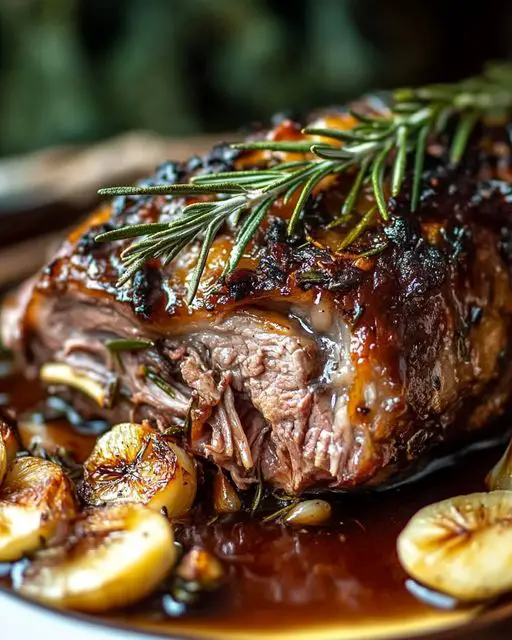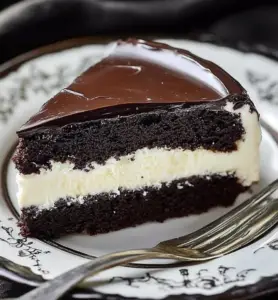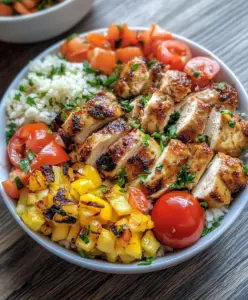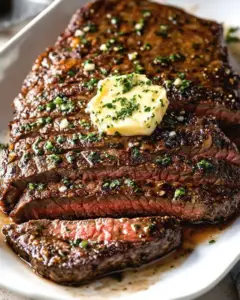Tender Slow-Roasted Lamb Shoulder Glazed with Rosemary, Garlic, and Honey: A Showstopping Centerpiece
Imagine pulling a golden-brown lamb shoulder from your oven, its sticky honey glaze glistening under the kitchen lights. The aroma of rosemary and garlic fills your home as the meat falls effortlessly off the bone. This tender slow-roasted lamb shoulder glazed with rosemary, garlic, and honey transforms an ordinary dinner into a memorable feast.
Slow roasting works magic on tougher cuts like lamb shoulder. The extended cooking time breaks down connective tissues while the honey glaze caramelizes into a sweet, herb-crusted exterior. Whether you’re hosting a holiday gathering or simply craving restaurant-quality meat at home, this recipe delivers impressive results with minimal hands-on effort.
Quick Recipe Highlights
- Flavor Profile: The natural richness of lamb balances beautifully with sweet honey, earthy rosemary, and pungent garlic. A hint of acidity from lemon cuts through the fat.
- Texture: Slow roasting creates fork-tender meat with a sticky, slightly crisp exterior that gives way to juicy strands beneath.
- Aroma: Rosemary and garlic perfume the meat during roasting, while the honey glaze develops deep caramel notes in the final stages.
- Visual Appeal: The glazed crust develops an Instagram-worthy sheen, while the pink interior meat makes a stunning contrast when carved.
- Skill Level Needed: While the recipe requires patience, the technique remains straightforward enough for confident beginners.
- Special Equipment: A heavy roasting pan and meat thermometer ensure perfect results, though you can improvise with basic kitchen tools.
Recipe Overview
- Difficulty Level: This recipe earns its intermediate rating from the long cook time and glaze application timing, though the actual steps remain simple. Perfect for cooks ready to level up their roasting skills.
- Category: Ideal as a main course for special occasions, Sunday dinners, or holiday feasts where you want to impress guests.
- Cuisine: While lamb appears across Mediterranean and Middle Eastern cuisines, this preparation leans toward modern American techniques with global flavor influences.
- Cost: Lamb shoulder offers excellent value compared to pricier cuts like rack or leg, making this an affordable luxury for 6-8 people.
- Season: Though delicious year-round, this dish shines in cooler months when slow-roasted meats feel most comforting.
- Occasion: Save this showstopper for dinner parties, family gatherings, or anytime you want to create lasting food memories.
Why You’ll Love This Recipe
First, the taste experience will convert even hesitant lamb eaters. The slow roasting process mellows any gaminess while the honey-rosemary glaze adds complex sweetness. Each bite delivers contrasting textures from the sticky crust to the meltingly tender interior.
Second, the hands-off cooking method means you can focus on sides or guests while the oven does the work. After initial prep, you’ll only need to baste occasionally before the final glaze application. This makes entertaining stress-free since the main course practically cooks itself.
Nutritionally, lamb shoulder provides high-quality protein, iron, and B vitamins. While rich, the meat contains beneficial fats when enjoyed in moderation. The rosemary not only adds flavor but also contains antioxidants that may help reduce inflammation.
For social gatherings, this dish creates natural conversation starters as you carve the glazed shoulder tableside. The dramatic presentation and incredible aroma guarantee compliments from every guest. Leftovers also make fantastic sandwiches or salad toppings for days after.
Finally, this recipe proves impressive meals don’t require expensive ingredients or complicated techniques. A few humble ingredients transform into something extraordinary through time and proper heat. The cost per serving remains reasonable compared to restaurant lamb dishes.
Historical Background and Cultural Significance
Lamb holds deep cultural significance across Mediterranean and Middle Eastern cuisines, often served at celebrations and religious festivals. Ancient Romans prized lamb for feasts, while Middle Eastern cultures developed slow-cooked preparations like mansaf. The combination of honey and meat appears in historical recipes from Ancient Greece to Medieval Europe.
Rosemary’s use as a meat seasoning dates back centuries, valued both for flavor and preservation qualities before refrigeration. Monks spread rosemary cultivation across Europe, where it became synonymous with remembrance and fidelity in culinary traditions.
Modern interpretations of glazed lamb shoulder borrow from these historical roots while incorporating contemporary techniques. The low-and-slow roasting method ensures tenderness while the glaze adds restaurant-quality polish. This recipe represents how traditional ingredients can shine in today’s kitchens.
Regional variations abound – some cultures use pomegranate molasses instead of honey, while others incorporate warm spices like cumin or coriander. The basic principle of slow-cooked lamb with sweet-acidic elements appears across culinary traditions, proving its universal appeal.
Ingredient Deep Dive
Lamb Shoulder: This well-exercised cut contains generous marbling and connective tissue that transforms into gelatin during slow cooking, creating incredible tenderness. Look for shoulders with even fat distribution and pinkish-red flesh. Ask your butcher for bone-in cuts when possible, as the bone adds flavor during roasting.
Honey: Opt for raw, unfiltered honey when possible for its complex floral notes. The natural sugars caramelize beautifully while adding depth beyond mere sweetness. Darker honeys like buckwheat work particularly well with robust meats like lamb.
Rosemary: Fresh rosemary’s piney aroma stands up to long cooking times better than dried. Look for vibrant green sprigs without yellowing needles. Strip leaves from woody stems before chopping to release maximum oils.
Garlic: Fresh garlic cloves provide the best flavor – avoid pre-minced varieties. The slow roasting mellows garlic’s sharpness while distributing its essence throughout the meat. For deeper flavor, try roasting whole heads alongside the lamb.
Common Mistakes to Avoid
- Rushing the cooking process – true tenderness requires those slow hours. Check doneness with temperature, not time.
- Overcrowding the pan – leave space for air circulation so the exterior browns properly.
- Applying glaze too early – wait until the final hour to prevent burning.
- Skipping the rest period – letting meat sit before carving ensures juices redistribute.
- Using low-quality honey – inferior products can make the glaze cloyingly sweet.
- Over-trimming fat – some fat bastes the meat during cooking, so leave a thin layer.
- Opening the oven frequently – maintain steady temperature for even cooking.
- Carving against the grain – identify muscle direction for tender slices.
Essential Techniques
Slow Roasting: This gentle cooking method at 300°F (150°C) allows collagen to break down without drying the meat. Use an oven thermometer to verify temperature accuracy since oven dials often lie. The low heat ensures even cooking from surface to center.
Glaze Application: Wait until the final hour to brush on the honey mixture. This prevents sugar burning while still allowing caramelization. Apply in thin, even layers every 15 minutes for maximum shine and flavor penetration.
Resting: After removing from oven, tent loosely with foil and let rest 20-30 minutes. This crucial step allows juices to redistribute rather than spilling out when carved. The internal temperature will continue rising 5-10 degrees during this time.
Pro Tips for Perfect Slow-Roasted Lamb Shoulder
- Score the fat cap in a crosshatch pattern to help render fat and allow seasoning penetration.
- Place the lamb on a rack in the roasting pan to promote even browning on all sides.
- Add aromatic vegetables like onions and carrots to the pan – they’ll caramelize in the drippings.
- Use leftover pan juices and fond to make incredible gravy or sauce.
- If the glaze starts getting too dark, cover loosely with foil to prevent burning.
- Let the roasted lamb shoulder come to room temperature before refrigerating leftovers.
Variations and Adaptations
For Middle Eastern flair, add cumin, coriander, and sumac to the rub. Pomegranate molasses makes an excellent honey alternative. Greek versions might include oregano and lemon zest, while French preparations often feature herbes de Provence.
During spring, incorporate fresh mint into the glaze or garnish. In winter, add warming spices like cinnamon or star anise for depth. Summer versions can lighten the dish with citrus-forward glazes and fresh herb salads.
For dietary needs, substitute maple syrup or date syrup for honey if needed. The recipe naturally suits gluten-free and paleo diets when served with appropriate sides. Reduce sugar by using half honey, half mustard for the glaze.
Serving and Presentation Guide
Carve the lamb shoulder tableside for maximum drama, pulling apart large chunks with serving forks. Arrange on a platter with roasted vegetables and fresh rosemary sprigs. For individual plates, fan slices over creamy polenta or mashed potatoes.
Traditional accompaniments include roasted root vegetables, garlicky greens, or minted peas. Modern twists might feature grain salads, roasted cauliflower, or charred broccolini. Don’t forget crusty bread to soak up the delicious pan juices.
Serve slightly warmer than room temperature to best appreciate the meat’s texture and fat distribution. Provide small bowls of flaky sea salt and extra glaze for guests to customize their portions.
Wine and Beverage Pairing
Full-bodied reds like Syrah or Grenache complement the lamb’s richness with their dark fruit flavors and peppery notes. For white wine lovers, opt for an oaked Chardonnay with enough weight to stand up to the dish.
Non-alcoholic options might include tart cherry juice spritzers or ginger-infused sparkling water to cut through the fat. For beer pairings, choose malty amber ales or Belgian dubbels with caramel notes that echo the glaze.
After dinner, serve strong coffee or mint tea to aid digestion. The herbal notes in both beverages create pleasant flavor connections with the rosemary in the dish.
Storage and Shelf Life
Refrigerate leftovers within two hours in airtight containers for up to 4 days. The meat actually improves in flavor after a day as the seasonings meld. For longer storage, freeze portions up to 3 months wrapped tightly in foil then plastic.
Reheat gently in a 300°F (150°C) oven with a splash of broth to prevent drying. Alternatively, use leftover meat in sandwiches, salads, or pasta dishes where slight reheating suffices.
Discard any meat that develops off odors or slimy texture. While lamb fat solidifies when chilled, it should remain creamy white, not yellow or rancid-smelling.
Make Ahead Strategies
Season the lamb shoulder up to 24 hours in advance and refrigerate uncovered to dry-brine. This enhances flavor and texture. You can also prepare the glaze components separately, combining just before use.
For dinner parties, roast the lamb earlier in the day, then hold at 170°F (75°C) until serving time. Apply a final glaze just before presenting. The rest period actually benefits the meat’s texture.
When planning leftovers, intentionally roast extra vegetables alongside the lamb. These make quick next-day meals when combined with the meat in grain bowls or wraps.
Scaling Instructions
For smaller gatherings, ask your butcher to halve the shoulder. Reduce cooking time by about 30% and check temperature earlier. When doubling for crowds, use separate pans to avoid steaming and rotate positions in the oven.
Equipment adjustments become necessary when scaling up – ensure your oven can accommodate multiple pans with proper air circulation. You may need to prepare glaze in batches to have enough for frequent basting.
Remember that resting time remains constant regardless of size. Factor this into your serving timeline so the meat reaches the table at perfect temperature.
Nutritional Deep Dive
A 4-ounce serving of cooked lamb shoulder provides about 250 calories with 15g protein and 20g fat (8g saturated). The iron content meets about 15% of daily needs, while zinc supports immune function.
The honey glaze adds about 5g sugar per serving – less than many might assume. Rosemary contributes antioxidants like rosmarinic acid, while garlic offers allicin with potential cardiovascular benefits.
For balanced meals, pair with fiber-rich vegetables and whole grains. The protein and fat provide satiety, helping control portion sizes naturally. Those watching sodium can reduce salt in the rub without sacrificing flavor.
Dietary Adaptations
Gluten-Free: This recipe naturally fits gluten-free needs. Just ensure any store-bought broth or mustard used in the glaze bears a GF label.
Low-Carb/Keto: Reduce the honey by half and supplement with sugar-free sweeteners like erythritol. Increase fresh herbs for flavor without carbs.
Paleo: Use raw honey and ensure all ingredients meet paleo guidelines. Substitute coconut aminos if avoiding conventional mustard.
Low-FODMAP: Replace garlic with garlic-infused oil and limit honey to 1 tablespoon per serving. The infused oil provides flavor without the high-FODMAP compounds.
Troubleshooting Guide
Dry Meat: Likely overcooked – use a thermometer next time and pull at 195°F (90°C). For salvage, shred and mix with pan juices or broth.
Pale Exterior: Increase oven temperature to 400°F (200°C) for the final 15 minutes if needed for color. Ensure the rack position allows proper heat circulation.
Burnt Glaze: Next time cover loosely with foil if browning too quickly. For now, carefully scrape off overly dark spots before serving.
Tough Texture: The collagen hasn’t fully broken down – return to oven and check every 30 minutes until fork-tender.
Recipe Success Stories
Home cooks rave about how this recipe turns first-time lamb makers into confident chefs. Many report the aromas alone earn compliments from neighbors. One reader adapted it for her wedding rehearsal dinner, serving 30 guests with three shoulders roasted simultaneously.
Photography tips from successful makers suggest shooting in natural light to capture the glaze’s shine. Overhead shots showcase the carved meat beautifully, while close-ups highlight the herb crust. Many find the leftovers photograph equally well in sandwiches or grain bowls.
Creative adaptations include using the technique with pork shoulder or adding coffee to the glaze for depth. Some incorporate the meat into shepherd’s pie or stuffed peppers for second-day transformations.
Frequently Asked Questions
Can I use boneless lamb shoulder? Yes, though bone-in versions typically offer better flavor. Adjust cooking time down by about 30 minutes for boneless cuts and monitor temperature closely.
What if I don’t have fresh rosemary? Dried rosemary works in a pinch – use one-third the amount since dried herbs concentrate. Consider adding other fresh herbs like thyme to compensate.
How do I know when it’s done? The meat should reach 195°F (90°C) internally and pull apart easily with forks. If resistant, continue cooking in 30-minute increments.
Can I make this in a slow cooker? You can achieve tenderness but won’t get the caramelized crust. For best results, transfer to a baking sheet for final glazing under the broiler.
What sides pair best? Creamy polenta, roasted potatoes, or citrusy grain salads all complement beautifully. Don’t forget something green like garlicky kale or minted peas.
Additional Resources
Explore our guide to carving techniques for beautiful lamb presentation. For wine lovers, our sommelier’s red wine pairing chart helps select perfect bottles. Those new to working with lamb will appreciate our butcher’s guide to different cuts and their best uses.
Seasonal variation ideas appear in our holiday entertaining series, while weeknight adaptations feature in our Sunday supper collection. For more global flavors, check out our Middle Eastern spice blends that work beautifully with lamb.
PrintPerfect Slow-Roasted Lamb Shoulder with Rosemary and Honey
Description
A tender and flavorful slow-roasted lamb shoulder infused with aromatic rosemary and a touch of honey for a perfect balance of savory and sweet.
Ingredients
For the Crust:
- 1 (4-5 lb) lamb shoulder, bone-in
- 4 cloves garlic, minced
- 2 tbsp fresh rosemary, chopped
- 2 tbsp olive oil
- 2 tbsp honey
- 1 tsp sea salt
- 1 tsp black pepper
- 1 lemon, juiced
- 1 cup chicken or vegetable stock
Instructions
1. Prepare the Crust:
- Preheat oven to 325°F (160°C). Pat the lamb shoulder dry with paper towels.
- In a small bowl, mix garlic, rosemary, olive oil, honey, salt, pepper, and lemon juice to form a paste.
- Rub the paste all over the lamb shoulder, ensuring it is evenly coated. Place the lamb in a roasting pan and pour stock into the bottom.
- Cover the pan tightly with foil and roast for 3.5 to 4 hours, or until the meat is fork-tender.
- Remove the foil, increase the oven temperature to 425°F (220°C), and roast for another 15-20 minutes to crisp the exterior.
- Let the lamb rest for 15 minutes before carving. Serve with pan juices.
Notes
You can customize the seasonings to taste.




